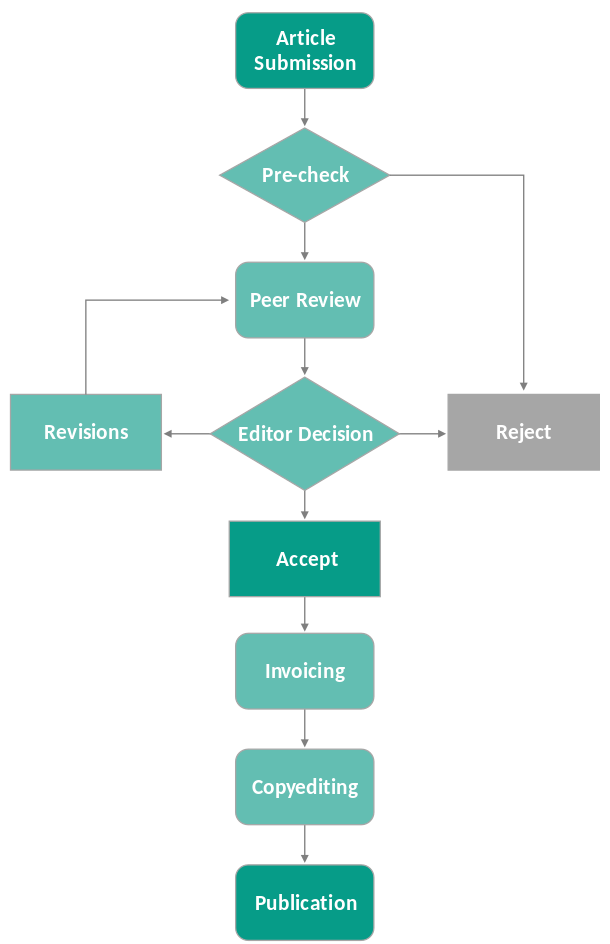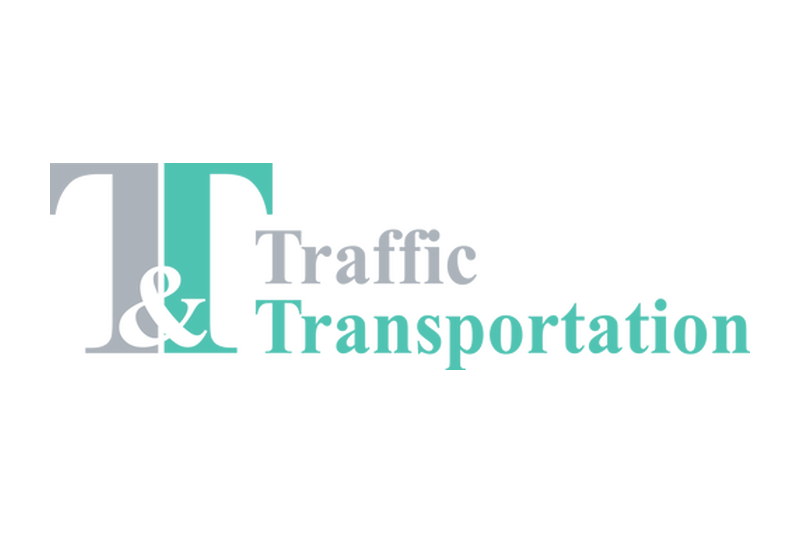The journal Promet – Traffic&Transportation follows a strict and clear peer-review process to ensure the highest quality of published articles. The review process is conducted by experienced researchers and scholars.
The peer-review process is double-blind, meaning both reviewers and authors remain anonymous. Each manuscript is evaluated by at least two independent reviewers. Once the peer review has been approved by the Section Editor, the manuscript is submitted to the Editorial Board for a final decision to accept or reject it, ensuring the academic quality of the entire process.
A flowchart below outlines the steps in the editorial process:

1. Submission
Authors submit their manuscripts through the journal's online submission system, providing all required documents and ensuring adherence to the journal’s guidelines. They are expected to carefully follow the Instructions for Authors, as well as the Aims and Scope. It's also recommended that authors use English editing services or ask an English-speaking colleague for help to improve the manuscript's quality.
2. Pre-check
The editorial team conducts an initial screening to check for adherence to submission guidelines, relevance to the journal's scope, and overall manuscript quality. Manuscripts that do not meet these basic criteria may be rejected at this stage. All submitted manuscripts are subjected to plagiarism checks. After the initial evaluation, the editor will determine whether to proceed with the peer review or reject the manuscript.
3. Peer review
This journal uses a double-blind process, i.e., the identities of the reviewer and the author remain hidden between them throughout the review process. To make this possible, authors need to ensure that their manuscripts are prepared in such a way that their identities are not revealed.
After a paper is submitted, the editorial board decides whether the paper is acceptable. If the submitted paper meets the submission requirements, reviewers are selected and assigned to review the paper. The reviewers are prominent scientists and experts with an established scientific track record that guarantees their competence in reviewing scientific papers.
Each submission is reviewed by at least two reviewers.
The review criterion is scientific and formal appropriateness for the journal's mission.
Based on the relevant factors of paper evaluation, the reviewers submit one of three possible proposals: the paper is acceptable for publication; the paper requires changes and additions; the paper is not acceptable for publication.
If two reviewers provide a negative evaluation of a paper, the submitting author will be informed that the paper has not been accepted for publication.
Additional peer review is required when a paper has one negative evaluation. The additional review will be conducted by a new reviewer or a member of Editorial Board.
Reviewers’ opinions and suggestions are communicated to the author, who is then required to make the necessary adjustments together with other authors, as instructed by the reviewers.
If the author disagrees with the reviewers' suggestions, the Editor-in-Chief reconciles the different opinions.
The capacity to publish papers in the journal is limited. It is entirely possible that papers recommended for publication by reviewers will not be published due to space limitations. We make every effort to publish all eligible papers, but the Editor-in-Chief reserves the final decision on publication.
4. Editor Decision (Accept, Reject, or Revise)
Based on the reviewers' feedback, the editor makes a decision regarding the manuscript. Authors may receive requests for minor or major revisions, or the manuscript may be accepted or rejected.
If revisions are required, authors are given a specified timeframe to address reviewer comments and resubmit the revised manuscript. The revised version may undergo further review if necessary.
Once all necessary revisions have been completed, the editor makes a final decision regarding acceptance. Accepted manuscripts proceed to copyediting and formatting.
5. Invoicing
Authors will be invoiced for publication fees for processing and open-access charges, as outlined in the journal's policy.
6. Copyediting
The manuscript undergoes professional copyediting to ensure clarity, grammar, formatting, and adherence to the journal's style guide. Authors may be asked to review and approve any copyediting changes.
This step also includes layout design, formatting, and ensuring the manuscript meets the journal's standards for publication. Authors will be involved in approving the final proofs.
7. Publication
The manuscript is published online and made available to the academic community.


